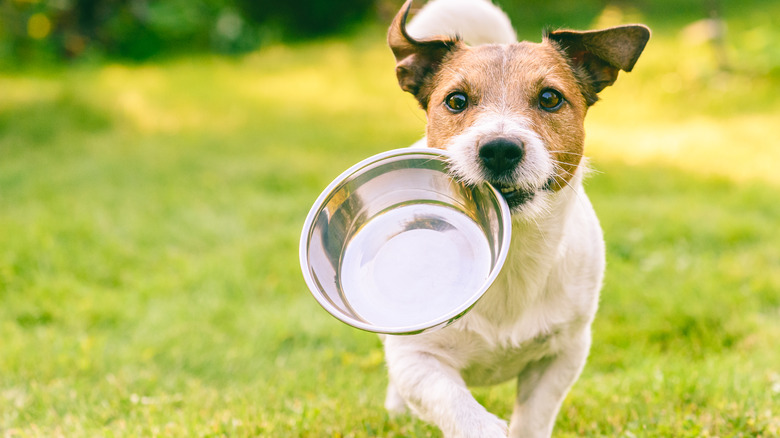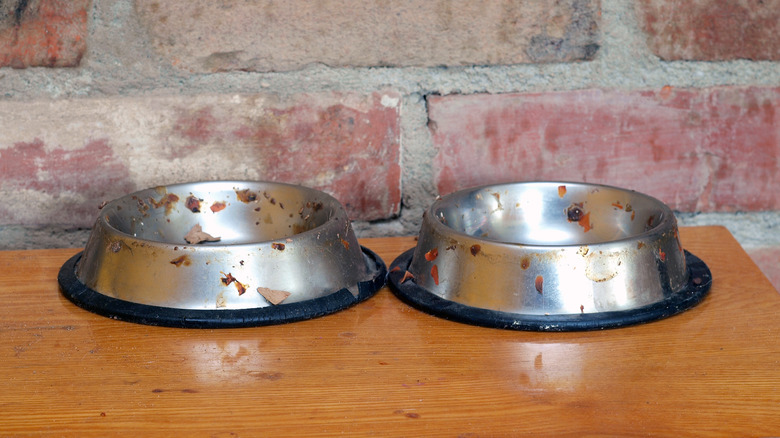Here's How Often You Need To Clean Your Pet Food Bowls
If you aren't regularly washing your pets' food bowls, you aren't the only one. Most people tend to overlook the need to wash their pets' bowls. After all, most pets lick their bowl clean after they eat, leaving it with a relatively clean appearance. However, you may be shocked to learn that pet bowls are the fourth most germiest items in the home, according to a study conducted by the National Sanitation Foundation.
In an interview with iHeartDogs, veterinarian Dr. Jessica Vogelsang confirmed the tendency of pet bowls to harbor bacteria. Vogelsang stated, "Both food and water bowls for dogs and cats can harbor a variety of germs and bacteria such as Salmonella and E. coli," adding that these germs are incredibly harmful to both the pets and humans that live in the home. Unfortunately, the germs found on the surfaces of pet bowls "can survive in the environment for a long time," making it even more important to clean the bowls regularly.
In addition to washing your pets' bowls, you should also make sure they are comprised of safe materials to reduce the number of germs. Vogelsang told iHeartDogs that stainless steel is the ideal material to use as it is non-porous, hard, and easy to disinfect. Ceramic is another approved material as long as it is free of fractures, while plastic should be avoided as it contains tiny fissures that attract bacteria. Here's how often you should both wash and disinfect your pets' bowls.
How often you really need to wash your pets' food bowls
Veterinarian Dr. Jerry Klein revealed to The Kitchn that pet owners should aim to clean their pet bowls once a day. The best time to take a sponge and dish soap to those bowls is after the final meal of the day to ensure bacteria isn't allowed to grow throughout the night. You will want to ensure that the water is as hot as possible without burning your hands and that you spend a good few minutes scrubbing the bowls underneath the water. The heat will kill the bacteria present on the bowls. Once you've washed and rinsed the bowls, leave them to air dry. Take care not to allow them to touch other dishes or towels in case any bacteria remains.
In addition to daily washing, you will also need to properly sanitize your pets' dog bowls once per week. If you have bleach on hand, this is the ideal way to ensure all bacteria are killed. However, running the bowls through the sanitizing program in your dishwasher is another perfectly acceptable option. For bleach soaks, add 1/4 cup of bleach to a gallon of water and leave the bowls for several minutes. Make sure to rinse them thoroughly after. Dr. Klein points out that anyone feeding their dog raw meat should be disinfecting not just the bowls but any surface and kitchen tool that comes in contact with the meat after every meal.

